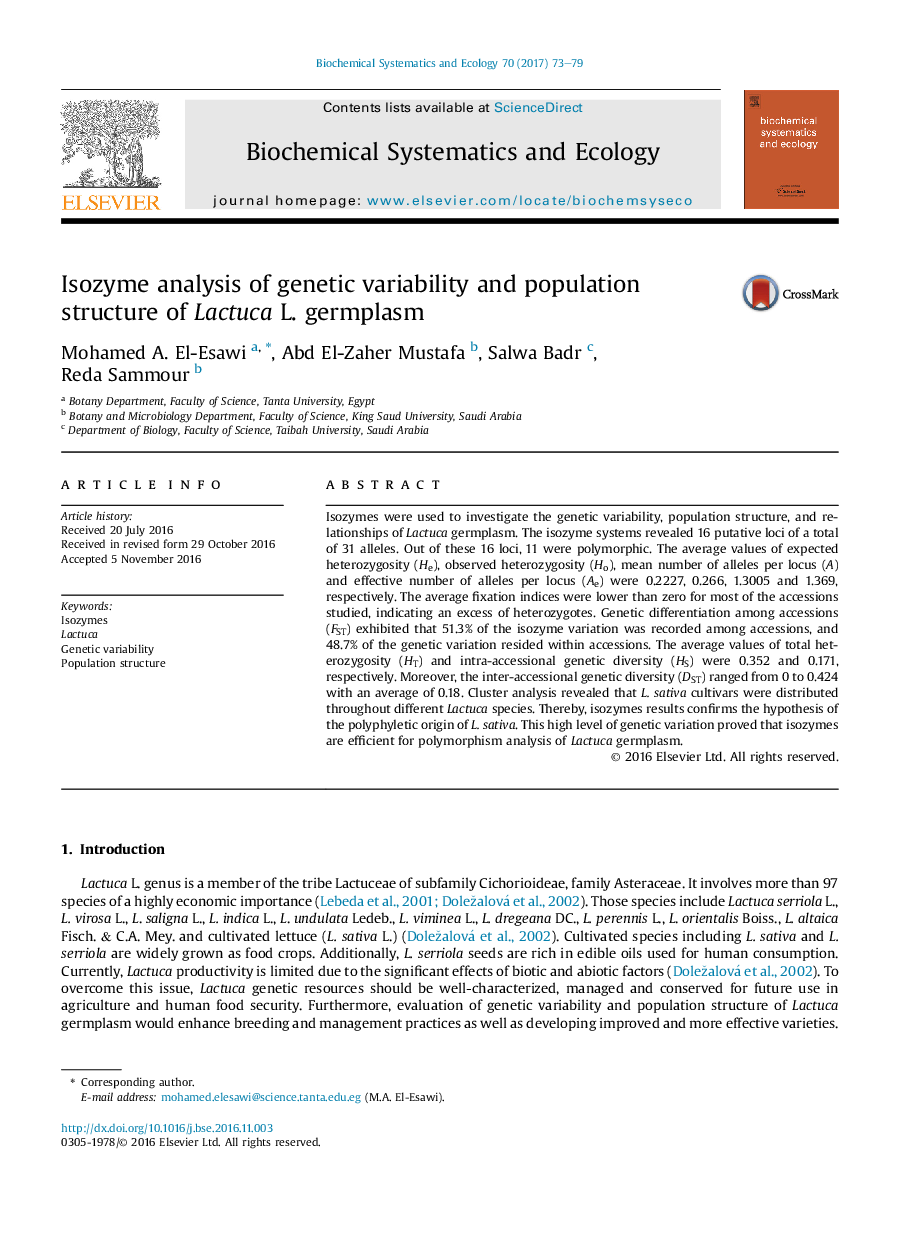| Article ID | Journal | Published Year | Pages | File Type |
|---|---|---|---|---|
| 5154966 | Biochemical Systematics and Ecology | 2017 | 7 Pages |
Abstract
Isozymes were used to investigate the genetic variability, population structure, and relationships of Lactuca germplasm. The isozyme systems revealed 16 putative loci of a total of 31 alleles. Out of these 16 loci, 11 were polymorphic. The average values of expected heterozygosity (He), observed heterozygosity (Ho), mean number of alleles per locus (A) and effective number of alleles per locus (Ae) were 0.2227, 0.266, 1.3005 and 1.369, respectively. The average fixation indices were lower than zero for most of the accessions studied, indicating an excess of heterozygotes. Genetic differentiation among accessions (FST) exhibited that 51.3% of the isozyme variation was recorded among accessions, and 48.7% of the genetic variation resided within accessions. The average values of total heterozygosity (HT) and intra-accessional genetic diversity (HS) were 0.352 and 0.171, respectively. Moreover, the inter-accessional genetic diversity (DST) ranged from 0 to 0.424 with an average of 0.18. Cluster analysis revealed that L. sativa cultivars were distributed throughout different Lactuca species. Thereby, isozymes results confirms the hypothesis of the polyphyletic origin of L. sativa. This high level of genetic variation proved that isozymes are efficient for polymorphism analysis of Lactuca germplasm.
Related Topics
Physical Sciences and Engineering
Chemistry
Organic Chemistry
Authors
Mohamed A. El-Esawi, Abd El-Zaher Mustafa, Salwa Badr, Reda Sammour,
